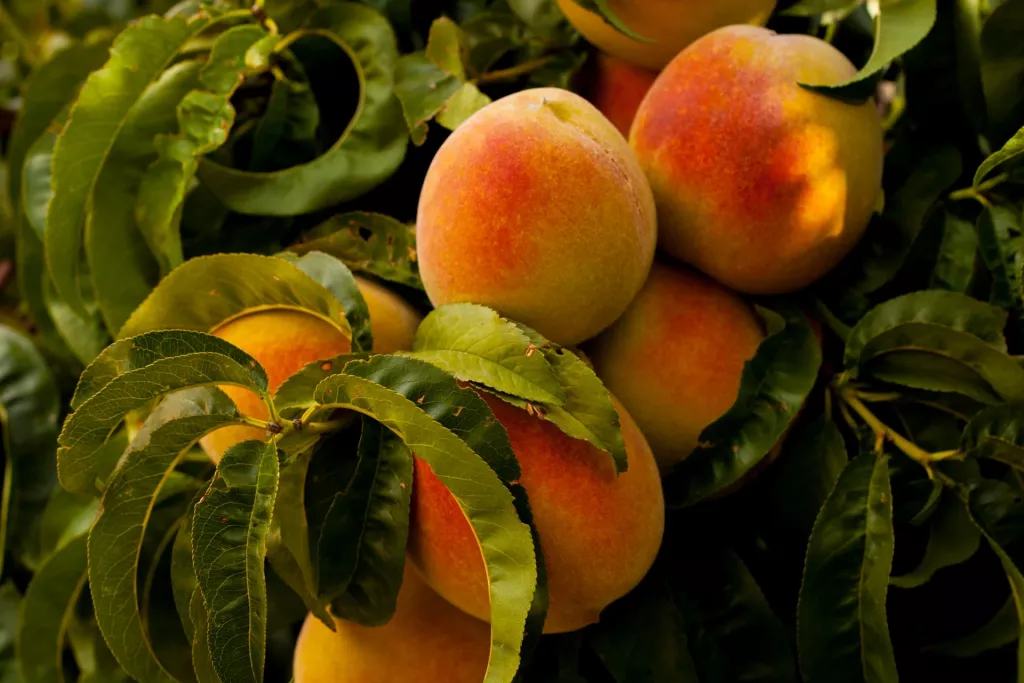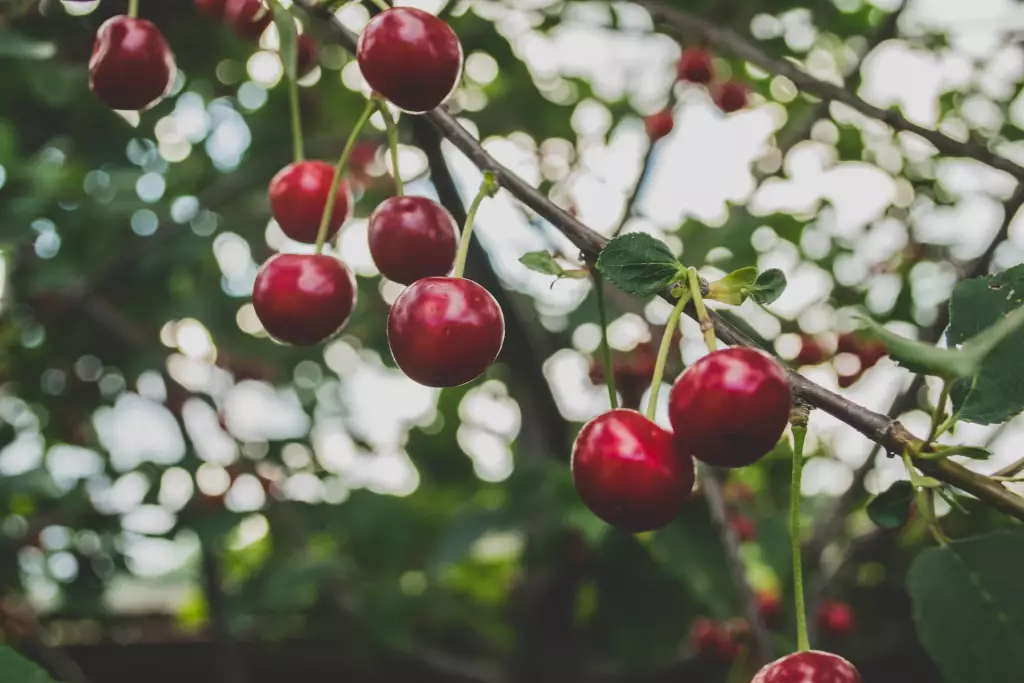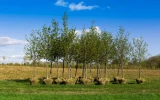How Many Fruit Trees per Acre? (Peach, Apple, Cherry, Pear)
Planting fruit trees is a great way to add beauty to your landscape while also enjoying fresh, delicious fruit right from your own backyard. But how many fruit trees should you plant per acre to maximize your yield and keep your orchard organized? In this article, we'll guide you through the recommended tree spacing for different fruit trees like peach, apple, cherry, and pear.
An average orchard can have around 109 standard peach trees per acre, 36 standard apple trees per acre, 134 standard cherry trees per acre, and 108 standard pear trees per acre. If you opt for dwarf varieties, you can fit 120 to 1,815 trees of peach, apple, cherry, and pear in the same space.
To determine the ideal number of trees per acre, it's important to consider factors like the type of fruit tree and its rootstock, as well as factors like sunlight, water, and space for the roots. Let's get to know how these factors can impact the quantity and quality of your fruit yield.
Summary
- When it comes to planting standard fruit trees, you'll want to give them enough space to grow and spread their branches.
- Dwarf fruit trees are smaller and more compact, so they can be planted closer together.
- To maximize your fruit yield and maintain the health of your trees, be sure to prune and care for them regularly. Additionally, consider factors such as soil quality, irrigation, and pest control.
- Keep in mind that planting trees at a higher density can lead to increased productivity but may also require more pruning and maintenance to manage tree growth.
- Regardless of the type of fruit tree you choose, always make sure to select the appropriate rootstock and follow proper orchard management practices for a successful apple harvest.

On this page:
Number of Fruit Trees per Acre
| Fruit Tree Specie | Standard Trees per Acre | Dwarf Trees per Acre |
|---|---|---|
| Peach tree | 109 trees | 726 to 1,815 trees |
| Apple tree | 36 trees | 170 to 400 trees |
| Cherry tree | 134 trees | 120 to 180 trees |
| Pear tree | 108 trees | 193 to 302 trees |
Peach Trees per Acre
Plant 109 standard peach trees per acre
You'll need to consider the space required between rows and between trees to maximize your peach yield. As a general guideline, standard peach trees should be spaced about 18–20 feet apart within a row, and rows should be about 20 feet apart. This spacing results in approximately 109 trees per acre. You can adjust this spacing based on the fertility of your soil and the vigor of your chosen variety.
Grow up to 1,815 dwarf peach trees per acre
For those with limited space, dwarf peach trees offer a more compact solution without sacrificing fruit yield. These trees are suitable for high-density orchards and can be grown with closer spacing than standard peach trees. Typically, dwarf peach trees require about 10–13 feet between rows and 3–4 feet between trees. This allows for around 726 to 1,815 trees per acre, depending on the variety and vigor.
Remember that the key to successful peach tree production lies in proper pruning and maintenance. Following the Peach Pruning Blueprint guidelines helps develop low, spreading, open-center trees, leading to optimal yields of high-quality fruit.
Apple Trees per Acre
Plant around 36 standard apple trees per acre
The spacing between the trees should typically be around 20 feet apart, with rows spaced about 20 feet apart as well. This will give your standard apple trees enough room to grow and flourish.
Grow up to 400 dwarf apple trees per acre
On the other hand, if you choose to plant dwarf apple trees, you can significantly increase the number of trees per acre. Dwarf apple trees can be planted much closer together, allowing you to plant up to 400 trees per acre. For these trees, maintain a spacing of about 6 feet between each tree and about 12 feet between rows.
Cherry Trees per Acre

Grow about 134 standard cherry trees per acre
When it comes to planting standard cherry trees, the recommended spacing is 18 feet between trees. This allows each tree to have enough space to grow and produce fruit. Since there are 43,560 square feet in an acre, you can calculate how many standard cherry trees you can plant per acre. By dividing 43,560 by (18 feet x 18 feet), you'll find that you can fit about 134 standard cherry trees per acre.
Plant up to 180 dwarf cherry trees per acre
Many cherry orchards plant between 120 and 180 trees per acre, with some growers planting up to 200 trees per acre in high-density orchards. As a general guideline, you may opt to space your dwarf cherry trees 10 to 15 feet apart, though the exact spacing may vary depending on the specific variety and growing conditions.
Pear Trees per Acre
Plant about 108 standard pear trees per acre
A common rule of thumb is to space standard pear trees about 20 feet apart. This will allow for good air circulation, sunlight penetration, and easy access for maintenance and harvesting. On an acre, which is approximately 43,560 square feet, you can plant about 108 standard pear trees, assuming a square grid pattern.
Plant up to 302 dwarf pear trees per acre
To ensure sufficient light and airflow, you generally want to space dwarf pear trees about 12–15 feet apart. Depending on the specific cultivar and growth habit, you can plant between 193 and 302 dwarf pear trees per acre. It's important to remember that although dwarf pear trees can produce a significant amount of fruit in a smaller space, they typically have a shorter lifespan compared to standard pear trees.
Basic Principles of Fruit Tree Planting

These principles will provide guidance for optimum tree growth and fruit production. We will be focusing on peach, apple, cherry, and pear trees.
Tree spacing
Proper tree spacing is crucial for fruit tree planting because it allows your trees to have enough room for their roots to spread and for sunlight to reach the canopy. Also, it helps with air circulation, which can aid in preventing diseases.
-
For peach trees, standard size trees typically need 15–20 feet of space between them, while dwarf varieties require 10–12 feet.
-
Apple trees vary in size depending on the apple variety and rootstock. Standard size apple trees should be spaced about 20–25 feet apart, while semi-dwarf and dwarf trees need 15–20 feet and 10–15 feet, respectively.
-
Cherry trees also vary in size. Standard sweet cherries require 35–40 feet of spacing, while sour cherries and dwarf varieties need 20–25 feet and 8–10 feet, respectively.
-
Finally, pear trees should be spaced approximately 20 feet apart for standard sizes and 10–15 feet apart for dwarf varieties.
Row spacing
Row spacing accommodates the needed work and maintenance for your trees, such as mowing, pruning, or harvesting.
For peach, apple, and pear trees, rows should be spaced about 20–25 feet apart for standard size trees, and 12–15 feet apart for dwarf varieties. Cherry trees will require 25–30 feet of space between rows for standard size sweet cherries, 20–25 feet for sour cherries, and 12–15 feet for dwarf varieties.
Orchard Management Practices for the Health and Productivity of Fruit Trees

Proper orchard management practices can help prevent pest and disease problems, improve fruit quality, and increase yields.
-
Pruning and maintenance: It is important to prune fruit trees during their dormant period to remove dead, damaged, or diseased wood, promote air circulation, and stimulate new growth. The type and amount of pruning required will vary depending on the fruit tree species and the desired shape and size of the tree. It is also important to fertilize fruit trees regularly to provide them with the nutrients they need to produce healthy fruit.
-
Rootstock: Choosing the appropriate rootstock is important for the health and productivity of fruit trees. The rootstock determines the size and vigor of the tree, as well as its resistance to pests and diseases. It is important to choose a rootstock that is compatible with the soil type and climate in your area.
-
Soil quality: It is important to test the soil regularly to determine its pH and nutrient levels, and to amend the soil as needed to provide the trees with the nutrients they need to grow and produce healthy fruit.
-
Irrigation: It is important to provide the trees with enough water to meet their needs, but not so much that the soil becomes waterlogged. The amount and frequency of irrigation required will vary depending on the fruit tree species and the climate in your area.
-
Pest control: It is important to use integrated pest management practices to prevent pest problems, including regular monitoring, cultural controls, and the use of pesticides only when necessary.



